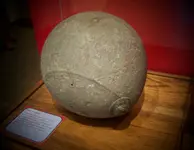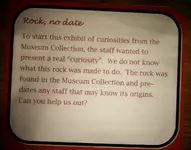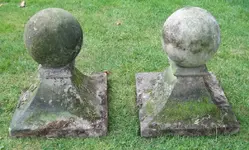tamrock
Platinum Member
Yesterday afternoon on my way home from Montana I stopped by the Fort Casper museum in Casper Wyo. On display is this strange rock the staff has no info on. It measures around 14 inches in diameter and maybe 20 inches end to end. IMO, it is the result of a unique circumstances of natural erosion. I'm sure some of you who have explored for gold in the rivers, have come across perfect bore hold in large boulders caused by swirling currents full of the sand particles eating away in a circle at the rock. Me and a bud found a hole like that in a large boulder on the north folk of the American river years ago, full up with gravel and sand. We dug & panned it out with not hardly speck, until we cleaned it to the bottom of the hole and found one nice picker that was 0.04 grams. That was it for all that work. So! going back to this strange stone, I think it fell in one of those naturally eroded boreholes and the sandy water got it spin like a top in that hole and it took on this shape and creating a perfect pivot point at the base. That pivot, gave this rock a great advantage to allow the swirling current to spin this stone with an almost perfect balance and speed to shape this rock to what it is now. That's my take on how this happened, and if it's not that, I've no clue how this rock came to be this way. I'm not going with it being done this way by the hand of man, but who knows 








